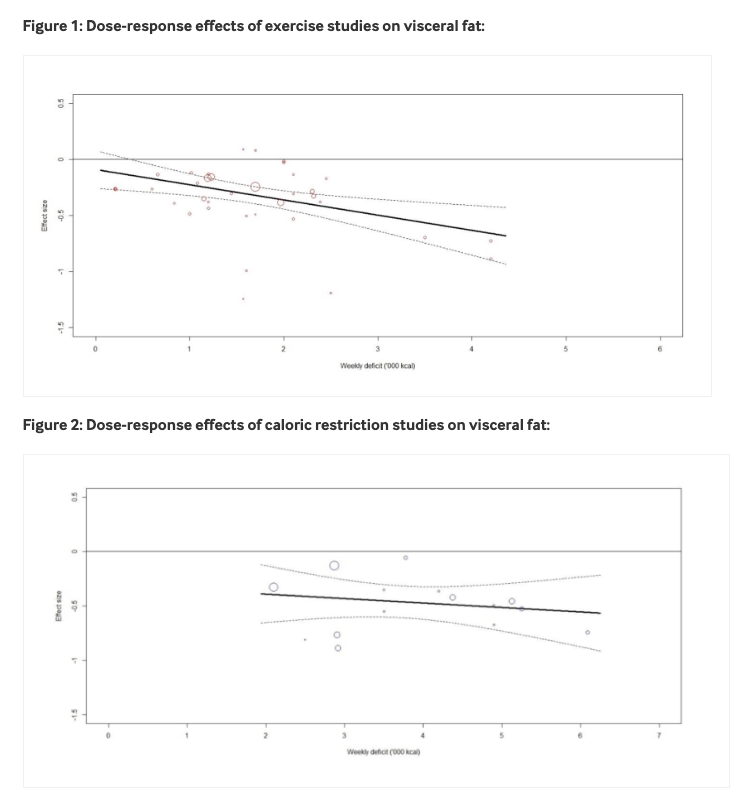Diet or Exercise: The Classic Question Gets a New Answer?
A new article discusses a recent study that compared the effects of exercise and caloric restriction on reducing visceral fat in people who are overweight or obese. Visceral fat is a type of fat that accumulates in the abdominal cavity and surrounds vital organs such as the liver, pancreas, and intestines. This type of fat is different from subcutaneous fat, which is found just beneath the skin.
Because this article refers to a summary article, and not the study itself, we won’t put the abstract below. Rather we’ll simply provide a link to The British Journal of Sports Medicine article at the end of this post.
Surprisingly, the study found that exercise was more effective in higher doses than caloric restriction in higher doses reducing visceral fat. The researchers also discovered a dose-response relationship between the amount of exercise and the amount of visceral fat loss. However, they did not observe a similar relationship between caloric restriction and visceral fat loss. These findings suggest that exercise is a more effective tool for reducing visceral fat in overweight and obese individuals.
Our Takeaways
Yes, you must cut calories and have a deficit. However, reducing calorie intake more and more (aka a high dosage of calorie cutting) isn’t as effective at losing visceral fat as cutting calories to a degree and allowing the exercise dosage to increase calories burned. This probably has to do with lean muscle mass decaying with highly reduced calorie intakes while increased exercise preserves or increases lean muscle mass while also placing the individual in a calorie deficit.
In short, reduce calories a bit, and exercise a lot more.

Additional Summary of Article
The study highlights the importance of distinguishing between visceral and subcutaneous fat in assessing metabolic health. While body mass index (BMI) is a widely used measure of obesity, it does not take into account the distribution of fat in the body. Visceral fat, in particular, is associated with a higher risk of metabolic disorders such as insulin resistance, type 2 diabetes, and cardiovascular disease.
The authors suggest that exercise should be considered a key strategy for improving metabolic health and reducing visceral fat in individuals who are overweight or obese. Further research is needed to confirm the effects of caloric restriction on visceral fat and to explore the underlying mechanisms that make exercise more effective in reducing this type of fat.
See the full article here: https://blogs.bmj.com/bjsm/2023/04/14/exercise-versus-caloric-restriction-for-visceral-fat-loss-which-is-better/
Listen to the Two Minute Audio Summary

Jordan Fowler has experience as a head swimming coach of the Frisco Swim Team, a TAAF-awarded coach, a track and field distance running consultant for select Texas High School runners, and has competed as a triathlete, road runner, and cyclist. Though he is remarkably slower than he was in his 20s and 30s, he still enjoys endurance sports and sports science studies.
